I. Introduction
II. What Is Local SEO for Lawyers (and Why It’s Essential)?
III. The Three Pillars of a Winning Local SEO Strategy
IV. Advanced Local SEO Tactics
V. Scaling Your Reach: Understanding White Label Local SEO Services
VI. Conclusion: From Local Visibility to Local Authority
I. Introduction
Imagine this: a potential client searches “car accident lawyer near me” late at night, anxious and looking for help. Your firm should be the first thing they see — but if you’re buried on page two, they’ll likely call someone else. In today’s world, legal expertise alone doesn’t guarantee clients; visibility does.
This is where Local SEO for lawyers comes in — a focused digital strategy that ensures your firm shows up exactly when and where people need you most. With 96% of people seeking legal advice starting online, mastering your firm’s local presence isn’t optional anymore — it’s essential.
This guide breaks down everything you need to know — from the fundamentals of Local SEO to advanced, AI-era tactics that keep your law firm ahead of competitors. Let’s dive in.
II. What Is Local SEO for Lawyers (and Why It’s Essential)?
1. Defining Local SEO: Local SEO (Search Engine Optimization) helps law firms improve visibility for geo-specific searches — the ones that matter most for client conversion. It ensures your practice appears in Google Maps, Local Pack results, and voice or AI-based searches like “best personal injury lawyer near me.”
Unlike traditional SEO, which targets a broad audience, Local SEO connects you with high-intent clients in your immediate area — people ready to call, book a consultation, or visit your office today.
2. The Core Benefits for Your Firm: Implementing Local SEO delivers measurable advantages that directly impact your bottom line:
- Competitive Edge: In a crowded legal market, local SEO helps you stand out. By optimizing for local search, you can outrank and out-earn competitors vying for the same pool of local leads
- Trust & Credibility: The process of local SEO involves generating positive client reviews and securing placements in reputable legal directories.
- Cost Efficiency: Local SEO generates leads at up to 70% lower cost than pay-per-click advertising. You’re reaching clients who already need your services — no wasted spend.
- Higher Conversions: Appearing in top local results increases calls, form submissions, and signed cases.
- Long-Term Growth: The efforts invested in local SEO today can continue to generate valuable traffic and leads for months or even years to come, creating a sustainable marketing asset for your practice.
III. The Three Pillars of a Winning Local SEO Strategy
Success in Local SEO is built on three interconnected pillars: Google Business Profile optimization, trust-building through reviews and citations, and localized content creation.
1. Master Your Digital Storefront: Google Business Profile Optimization: Your Google Business Profile (GBP) is the single most valuable asset in your local SEO arsenal. It’s often the first impression a potential client has of your firm, appearing directly in Google Maps and the Local Pack. A fully optimized GBP is 70% more likely to get visits and 50% more likely to be contacted. In the AI era, its importance is magnified, as AI Overviews and conversational search tools often pull information directly from a fully optimized GBP, making it the primary source for AI-generated answers about your law firm.
GBP Optimization Checklist for Lawyers:
- Claim and verify your profile.
- Ensure consistent NAP (Name, Address, Phone) information.
- Choose precise categories (e.g., Personal Injury Attorney, Criminal Defense Lawyer).
- Write a compelling, keyword-rich business description.
- Add all legal services and detailed explanations.
- Upload high-quality team and office photos.
- Collect and respond to client reviews.
- Use “Google Posts” for updates, blog links, and case wins.
- Answer client FAQs directly in your Q&A section.
Pro Tip: Use Google Business Insights to track how clients find you — whether by direct name search or discovery through keywords.
2. Build Trust with Reviews and Citations: 82% of potential clients read reviews before hiring a lawyer. Reviews influence both client trust and search rankings. AI tools and Google increasingly rely on review sentiment and recency to assess credibility.
How to Build a Strong Review Strategy:
- Ask happy clients for reviews right after a successful case.
- Provide direct review links via text or email.
- Respond professionally to all reviews — even critical ones.
Beyond reviews, citations (mentions of your firm’s name, address, and phone) across online directories build authority. Inconsistencies confuse search engines, so maintain perfect NAP accuracy.
Legal Directories to Prioritize:
|
Legal-Specific |
General Business |
|
Avvo |
Yelp |
|
Justia |
Bing Places |
|
FindLaw |
Yellow Pages |
|
Martindale-Hubbell |
Better Business Bureau |
Quality over quantity: A listing on Avvo or FindLaw is worth far more than dozens on low-quality directories.
The Google Screened Badge: Your Trust Signal
Achieving the Google Screened badge validates your firm as trustworthy and allows you to appear in Local Services Ads (LSAs) — the top tier of search results. Even without running LSAs, this verification boosts visibility and credibility, helping your firm stand out instantly.
3. Dominate Local Search with Hyper-Relevant Content: Generic legal content won’t win clients. What works is localized, human-focused content that speaks to your audience’s specific legal needs.
Create City and Service Pages
Build unique pages targeting each location and practice area, e.g.,
- “Car Accident Lawyer in Los Angeles”
- “Divorce Attorney in California”
Each page should include:
- City-specific legal information
- FAQs about local courts or regulations
- A call to action for free consultations
Write Localized Blog Content
Blog about local cases, laws, and community events:
- “What Georgia’s New Hands-Free Law Means for Drivers”
- “Recent Court Rulings That Affect Slip and Fall Claims in Miami”
These topics prove you’re not just a lawyer — you’re their lawyer.
IV. Advanced Local SEO Tactics
Once you’ve mastered the basics, elevate your local visibility with these advanced tactics.
1. Implement Schema Markup: Schema Markup is a type of code (structured data) added to your website’s HTML that helps search engines like Google understand your content more effectively. For law firms, the LegalService schema is particularly powerful. It allows you to communicate specific details like practice areas, lawyer credentials, accepted payment methods, and office locations directly to search engines.
This is crucial for being understood by AI-driven search. Implementing schema can also lead to “rich snippets” in search results—enhanced listings that may include star ratings or FAQs—which increase visibility and click-through rates.
2. Build High-Quality Local Backlinks: Backlinks from trusted, local sources remain a top ranking factor.
Ways to earn them:
- Sponsor community events or legal workshops.
- Get featured in local media or legal publications.
- Submit press releases for firm achievements.
- Join local bar associations and networking groups.
Use tools like Whitespark or Ahrefs to discover where your competitors are earning backlinks — and close the gap.
3. Sharpen Your Technical Edge: Website Optimization: A technically sound website is a non-negotiable prerequisite for SEO success. Search engines prioritize sites that offer a good user experience. Key technical components include website speed (your site should load in under 2.5 seconds), mobile-friendliness (as over half of all web traffic comes from mobile devices), and website security (using HTTPS to protect user data).
V. Scaling Your Reach: Understanding White Label Local SEO Services
As your firm grows, you may partner with a full-service marketing agency. It’s useful to understand that some agencies use “white label local SEO services.” This means they partner with a specialized legal SEO provider who performs the work, which the agency then manages and presents as their own. This is a common and effective industry practice that allows your marketing partner to provide expert, specialized services without having to build a dedicated SEO team in-house, ensuring you receive high-quality optimization.
VI. Conclusion: From Local Visibility to Local Authority
Achieving top rankings in local search is not the result of a single trick or tactic. It is a strategic, multi-layered approach that combines technical website optimization, consistent creation of hyper-relevant local content, and active management of your firm’s online reputation. By mastering your Google Business Profile, building trust through reviews and citations, and creating content that serves your local community, you build a powerful and sustainable client acquisition engine. Begin implementing these strategies today to attract more local clients, sign more cases, and grow your practice for years to come.
The following posts may interest you –
Top Content Marketing Strategies for Local SEO: AEO, GEO & SEO in Action
FAQs
The key components include optimizing your Google Business Profile (GBP), managing client reviews, ensuring NAP consistency, creating location-specific content, and implementing technical SEO (such as mobile-friendliness and Schema Markup).
Local SEO leads are highly targeted and cost-effective. Firms ranking in the Google Local Pack generate leads at a 50–75% lower cost than paid advertising (PPC), where costs typically range from $150 to $350 per lead.
Google prioritizes three core factors: Relevance (matching the search query), Distance (proximity to the user), and Prominence (offline popularity, positive online reviews, and the firm’s web presence).
NAP consistency (Name, Address, Phone) across all directories (like Avvo, Justia, and Yelp) is essential. Consistent NAP builds credibility with Google and potential clients, which helps to improve local search rankings and avoid discrepancies that confuse search engines.
Local SEO is a long-term strategy. Seeing tangible results usually takes several months to a year, depending on the market competition and the consistency of the ongoing management and optimization efforts
















